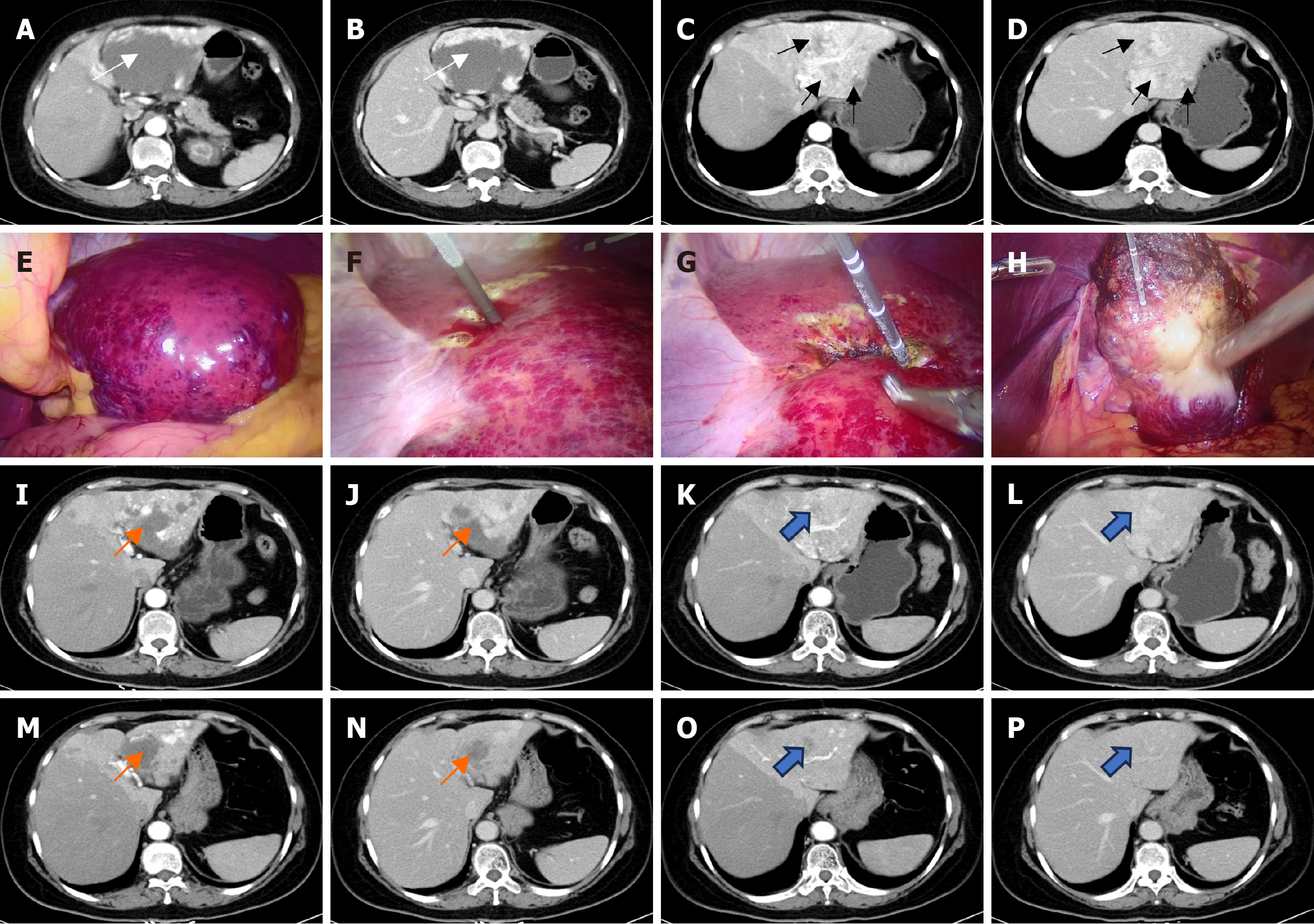Copyright
©The Author(s) 2025.
World J Gastrointest Surg. Mar 27, 2025; 17(3): 101697
Published online Mar 27, 2025. doi: 10.4240/wjgs.v17.i3.101697
Published online Mar 27, 2025. doi: 10.4240/wjgs.v17.i3.101697
Figure 1 Initial contrast-enhanced computed tomography scan of the abdomen obtained, intraoperative findings and follow-up contrast-enhanced computed tomography scan of the abdomen obtained of case 1.
A-D: Initial contrast-enhanced computed tomography (CT) scan of the abdomen obtained. A hemangioma (9.9 cm, white arrow) is evident in the left lateral segment of the liver, with multiple disseminated small enhanced nodular lesions (black arrows) adjacent to the hemangioma (A: Arterial phase; B: Arterial phase; C: Venous phase; D: Venous phase); E: Intraoperative findings of complete giant cavernous hemangioma (GCH); F: Microwave ablation of GCH, with the first application being launched from the exterior margin of the tumor; G: The second puncture point should be selected at the edge of the ablated zone rather than at the hemangioma to avoid bleeding at the puncture site. At the same time, numerous variably-sized red nodules were present near the GCH; H: After ablation, the ablated zone atrophied and collapsed; I-L: Follow-up contrast-enhanced CT scan of the abdomen obtained. Three months after ablation, contrast-enhanced CT revealed that the hemangioma was completely ablated, and the ablated zone (orange arrow) volume decreased. The reduction in the size of remained diffuse hepatic hemangiomatosis (blue arrow) was noted (I: Arterial phase; J: Arterial phase; K: Venous phase; L: Venous phase); M-P: Twenty months after ablation, contrast-enhanced CT showed that the ablated zone (orange arrow) had decreased further, with obvious shrinkage of the subtle residual diffuse hepatic hemangiomatosis (blue arrow) (M: Arterial phase; N: Arterial phase; O: Venous phase; P: Venous phase).
- Citation: Xu F, Kong J, Dong SY, Xu L, Wang SH, Sun WB, Gao J. Laparoscopic microwave ablation for giant cavernous hemangioma coexistent with diffuse hepatic hemangiomatosis: Two case reports. World J Gastrointest Surg 2025; 17(3): 101697
- URL: https://www.wjgnet.com/1948-9366/full/v17/i3/101697.htm
- DOI: https://dx.doi.org/10.4240/wjgs.v17.i3.101697









